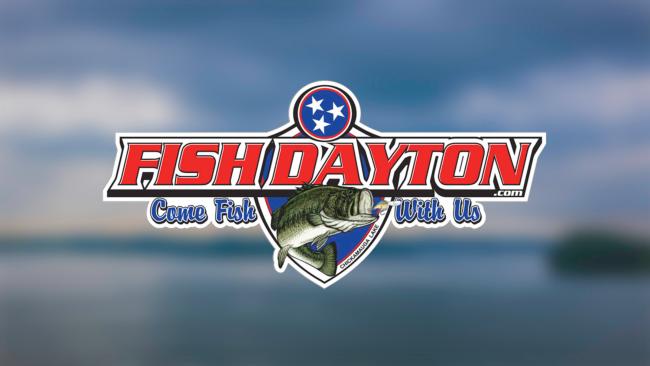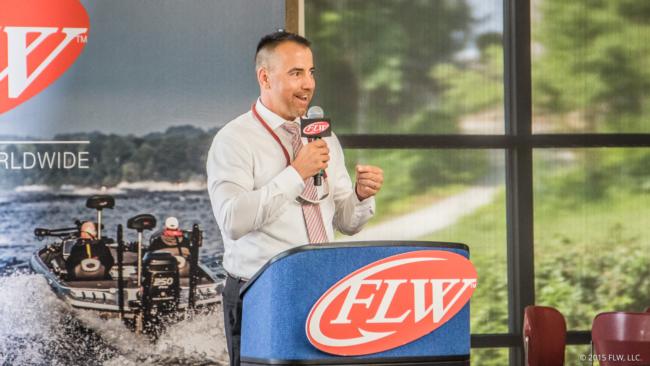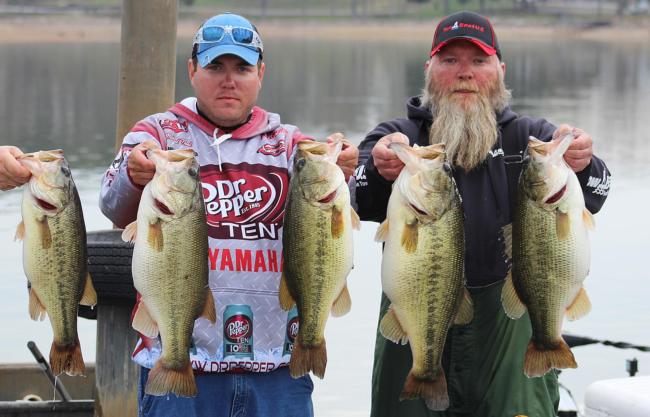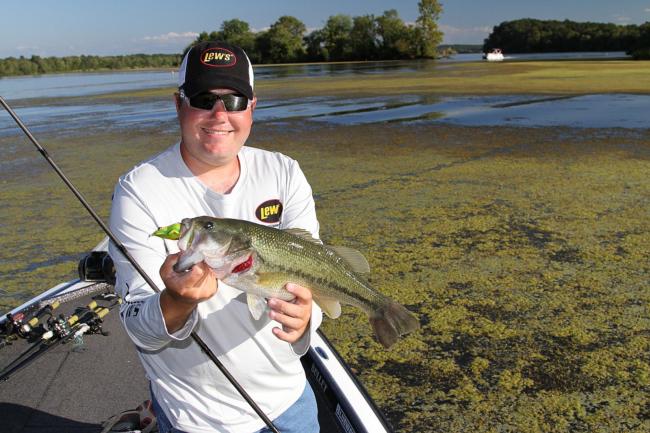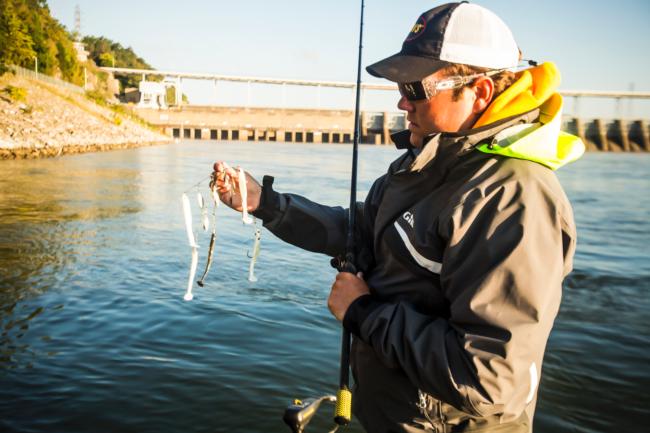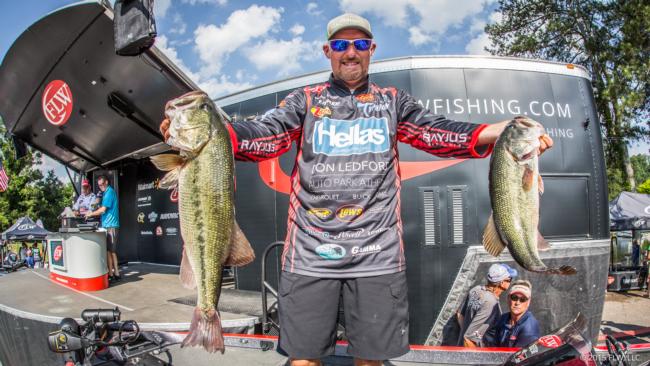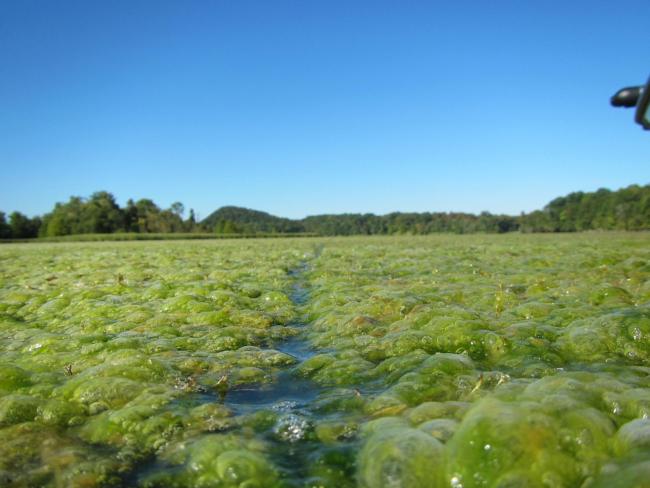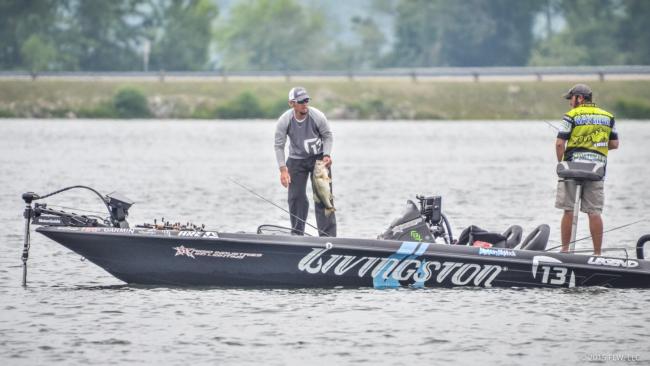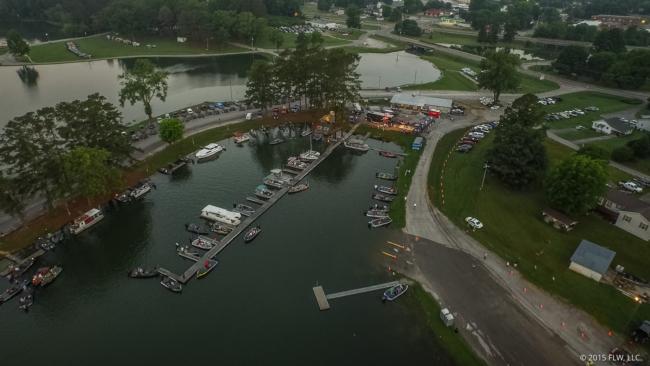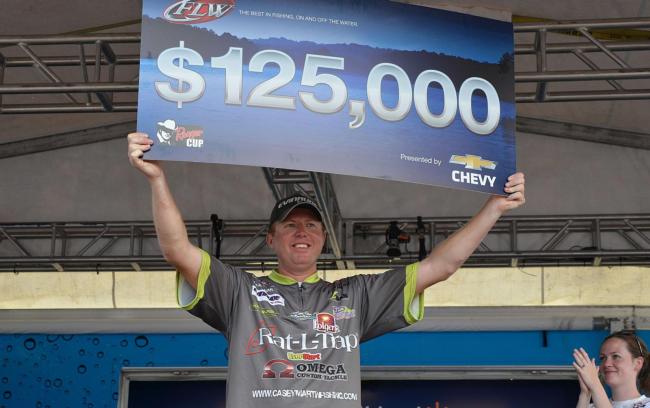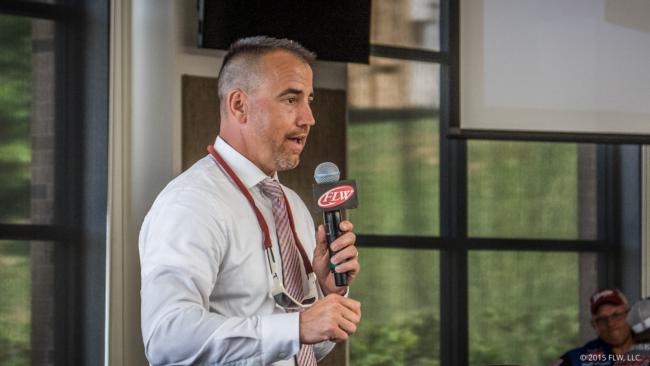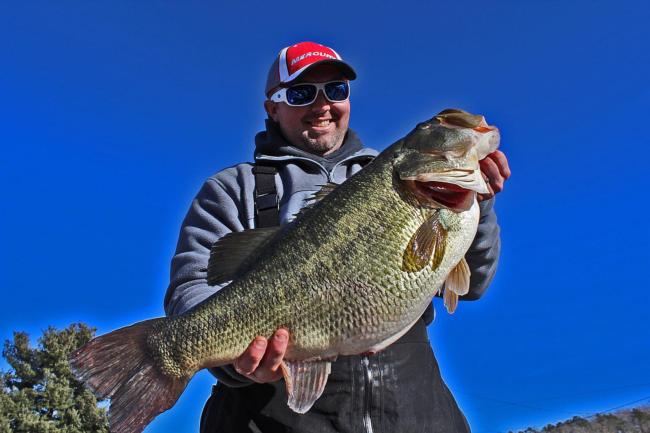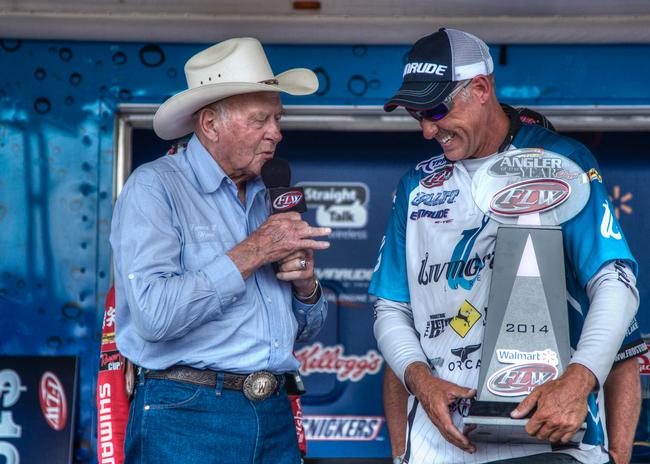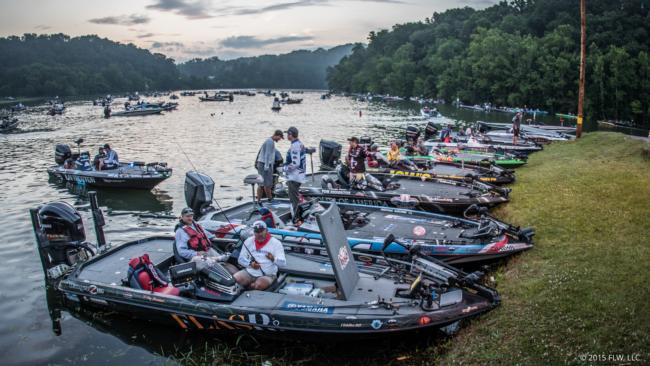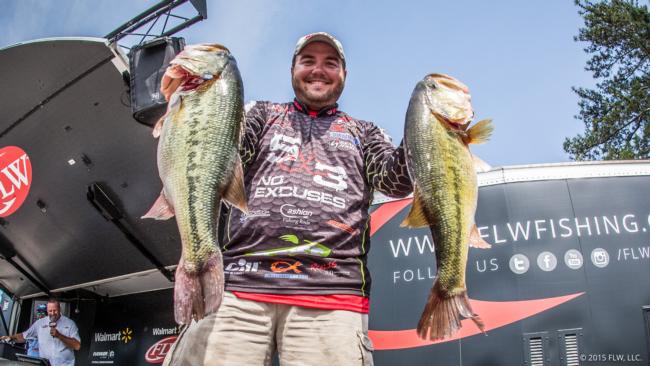Is this the New Bass Fishing Capital of the South?
How a Tennessee community is turning big largemouths into big business in its quest to become the epicenter for Southern bass fishing
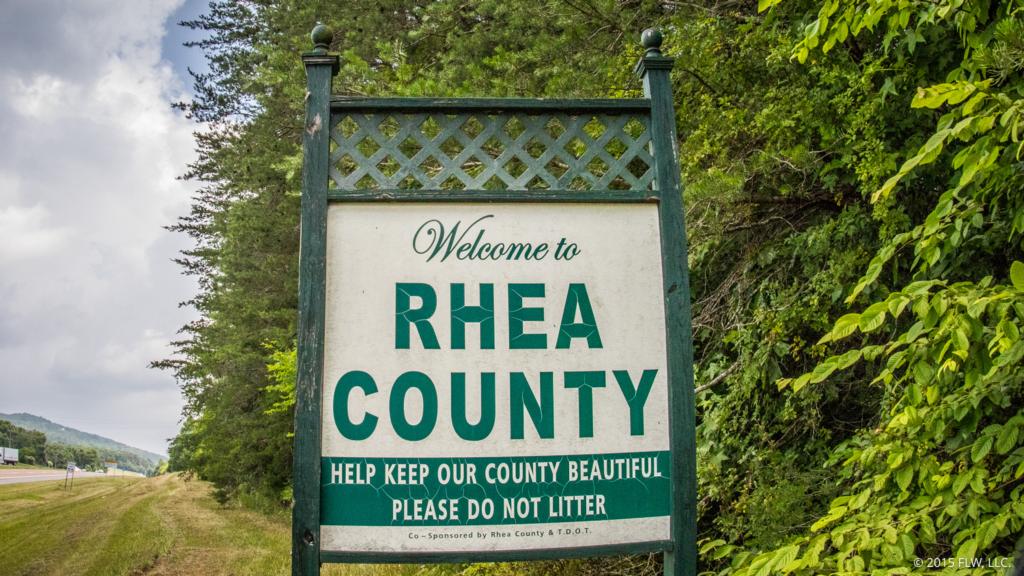
In the bass fishing universe, big things seem to grow from small towns.
Ranger Boats, for instance, emerged from the small community of Flippin, Ark., population 1,336, to become the standard by which modern-day bass boats are judged, and along the way company founders Forrest and Nina Wood helped to build a fledgling tournament industry.
FLW, whose operations division is based in the small community of Benton, Ky., population 4,377, sprung from a weekend bass series to become the world’s largest tournament fishing organization.
Countless tackle companies were also built from the ground up in small towns. Mann’s Bait Company is one example. It was started and still operates in Eufaula, Ala., population 12,914, and has introduced some of the most popular soft plastics and spinnerbaits and, more recently, the Alabama Rig.
Almost always there is one consistent theme at the heart of such small-town bass fishing success stories: Those companies are all located near world-class bass fisheries.
Ranger is practically on the banks of Bull Shoals Reservoir. FLW was founded right down the road from Kentucky Lake. And Mann’s is close to Lake Eufaula.
In each of those examples, the fishery was in some way the catalyst behind marketable goods or services that bass anglers were willing to buy.
Today, a small town in east Tennessee, similarly motivated by its proximity to a world-class fishery, is in the process of selling anglers on its product. However, in the case of Dayton, Tenn., population 7,397, the product is the fishing.
Dayton is situated on Richland Creek, a tributary that flows into the western side of Lake Chickamauga, one of the hottest bass fisheries in the country. Local officials with a flair for marketing – and good business sense – believe that Chickamauga can be the sellable “brand” that attracts bass fishermen to come and spend their time and their money in Dayton. They believe that old-fashioned Southern hospitality and small-town charm, plus trophy bass, are just the recipe for turning Dayton into “The New Bass Fishing Capital of the South.”
That’s the slogan created for the Fish Dayton program, a product of the Rhea County Economic and Tourism Council (ETC) and the brainchild of Rhea ETC Executive Director Dennis Tumlin and current Dayton Mayor Gary Louallen. They’ve made bass fishing and tourism one of Dayton’s primary industries. But Tumlin and Louallen, along with the Dayton City Council and Rhea County ETC, have taken economic growth by way of bass fishing to a new level. It starts with aggressively promoting the world-class fishing on Chickamauga and by luring regional and national tournament organizations – including FLW, who’s hosting its fifth Walmart FLW Tour stop of the season in Dayton this week – to come to town.
Their success has come swiftly, with local hotels and boat ramps packed during peak seasons, and bass fishermen from across the country traveling to sample Chickamauga’s waters, which keep churning out incredible limits of trophy largemouths.
Yet, bass fishing wasn’t always the focus in Dayton, nor has Chickamauga always been a trophy bass factory. The town and the lake’s sudden, meteoric rise is the result of a perfect storm of fisheries management and business savvy likely to keep this destination on the map for many more years.
Building the Lore
Realistically, what folks in Dayton are developing is nothing new in bass fishing circles. Other small towns around the country have been put on the map thanks to tremendous fishing opportunities: Clewiston, Fla., (population 7,243) on Lake Okeechobee; Scottsboro and Guntersville, Ala., (populations 14,831 and 8,366, respectively) on Lake Guntersville; and Grove, Okla., (population 6,692) on Grand Lake O’ the Cherokees.
Such communities are actually part of the inspiration behind what’s propelling Tumlin and Louallen in Dayton. They believe that a small town can and should benefit economically from its proximity to great bass fishing. Though probably the biggest difference is that towns such as Guntersville saw much of their rise happen organically – the fishing was good, and so people came – whereas the folks in Dayton are executing a plan specifically aimed at economic growth.
Tumlin has been the lynch pin of much of the development. A former national account manager for Coca-Cola, he’s a Dayton native who in his former career saw what tournament bass fishing could bring to a small community.
“I managed the Walmart business across the southeast U.S.,” Tumlin says. “My territory included Guntersville, Ala., and Eufaula, Ala. Every time there was a major event in those towns, Coca-Cola kept getting a call to be involved on some level, typically through the local Walmart. In 2011, I went to the [Dayton] city council as a Coca-Cola employee and presented what other towns were doing with their fisheries. I was exposed to the power of an FLW event in other towns, Guntersville and Eufaula in particular. I shared a vision, which was also a passion for, at that time, a city councilman named Gary Louallen, who was a longtime tournament fisherman. He also realized the value of what fishing can bring to the town.
“We’re a small rural county [Rhea County], and as far as economic development in a small rural east Tennessee county goes, you don’t have a new factory coming and knocking on your door every day,” continues Tumlin. “We saw the lake, through recreation and tournaments, as a way to drive our sales tax and lodging tax. Those are our two revenue sources. My primary focus is recruiting industry in town to fill up the industrial park with new jobs, but fishing is immediate. We can have a fishing tournament today and see the benefits of that fishing tournament next month. We see fishing as quick economic development and industry as long term. But it’s a challenge – you have to convince folks that bass fishing is an industry, and it’s not just a bunch of guys recruiting a bunch of fishermen into town. It’s huge.”
In 2011, the city council asked Tumlin and Louallen to investigate Dayton’s options. Lucky for them, what was going on under the surface of “Chick” was just as big as what was brewing in Dayton, but two decades ago that wasn’t the case.
The Bust
Lake Chickamauga benefits from the same fertile conditions as all the other lakes that make up the famed Tennessee River system. It’s full of shad, swept with rejuvenating current and at some point in its history became infested with Eurasian milfoil, which provided the habitat needed to turn the reservoir into the fish-producing factory that it was years ago when Dayton’s best-known angling prodigy Andy Morgan was growing up on the lake. The two-time reigning Walmart FLW Tour Angler of the Year who still calls Dayton home can recall the good times and the bad.
“When I was growing up, bass fishing around here was really big like it is now,” Morgan says. “We had a [Bassmaster] Classic here [1986]. We had the Bassmaster Megabucks [1991] and Invitational [1985] – it was big. The lake was full of bass. It was as good as it gets. We had a lot of smaller fish, but Chickamauga was totally full of bass. And we had milfoil.
“A lot of tournaments came out of Chattanooga back then,” he continues. “The first bass tournament that I won had 198 people in it – it was hosted by the Chattanooga Bass Association (CBA) – but I had seen lots of times when we had 300 people. Then whoever did it came in and killed the grass. Fishing was still good for a while. Then it just basically caught up with it. I was 15 in 1987 when I first got involved in tournament fishing. In the late ’80s and early ’90s it was good. Then in the late ’90s is when it was fairly poor.”
A lot of finger pointing went on following the demise of Chickamauga’s vast grass beds. Did the Tennessee Valley Authority kill off the grass with herbicide? Was there another culprit?
Richard Simms of Scenic City Fishing Charters is a local catfish guide who grew up on Chickamauga. After stints as a Tennessee Wildlife Resources Agency game warden and serving in a public relations capacity for the agency, Simms returned to Chattanooga and transitioned to a career as a TV news reporter at the local ABC affiliate, a career that spanned 31 years before he retired and took his guide business full time. Simms has spent the better part of six decades “knocking around” on Chickamauga, but he’s also documented much of the lake’s history as a freelance outdoor writer. Simms has a different theory regarding the demise of the milfoil.
“Basically, in the 1980s, for whatever reason, Eurasian milfoil came on strong,” he says. “The Tennessee Valley Authority, which is our reservoir management agency, of course, did intensive surveys. I think at one point we got as high as almost 10,000 acres of milfoil coverage [other sources say 7,000]. Bass fishing just boomed with the coverage. In the 1980s, people were just catching tons of bass, but weren’t really catching size. At that time, if you caught a 5-pounder, it was considered a rarity. In the early ’90s, it was just like the stock market crash, but it was the Eurasian milfoil crash.
“If you interview 100 fishermen, 99 will blame that crash on the TVA, but I’ll tell you in a heartbeat that I don’t necessarily buy into that theory,” Simms continues. “The TVA was doing a lot of aquatic management. They were spraying recreation areas, landowner areas [properties] and developed areas. My personal opinion is that there was a unique set of environmental factors that all came together, including a huge winter flood, that caused the crash of Eurasian milfoil. Whatever the reason, it all went away in one or two years. We went from 10,000 acres of milfoil to almost zero, and the bass fishing crashed with it. It just decimated the bass fishing for several years.”
Slowly, over the years, the bass started acclimating and adapting to newfound habitat, and the fishermen started adapting to a new style of fishing, says Simms. Instead of targeting vegetation all the time, anglers started ledge fishing. The fishing gradually improved until Chickamauga got the biggest boost of all – a hefty dose of Florida-strain genetics.
The Boom
Chickamauga’s real shot in the arm came about 15 years ago, when the TWRA, funded partially by donations from local bass fishermen, began stocking the reservoir with Florida-strain fingerlings.
“I don’t think it happened by accident, for sure,” says Mike Jolley, Region 3 reservoir manager with the TWRA, of the rise of Chickamauga’s bass fishery. “We started stocking Florida largemouth bass in Chickamauga in the year 2000, and we’ve put them in the lake every year since, except one. We’ve put more than 2 million fingerlings in Chickamauga.”
The program took a few years to really catch hold. Originally, 1- to 3-inch fingerlings were stocked throughout the lake, and they were somewhat scattered. Preliminary genetic testing in 2003 showed that the program wasn’t leading to the increase in Florida-strain genetics that reservoir managers hoped for.
Then in 2004, the stocking was focused into three embayments (Grasshopper Creek, Mud Creek and Richland Creek). The goal, as Jolley describes it, was to get the “genetic boost” up higher by promoting breeding between Northern and Florida bass subspecies in those areas.
Now, bass with Florida genes are being caught throughout Chickamauga, and those who have followed the tournament bass scene in recent years have seen the obvious results, often being shown off for cameras by Chickamauga guide and tournament fisherman Rogne Brown (pictured above, right), uncle of Walmart FLW Tour standout and Dayton local Michael Neal. Brown’s not the only one turning heads either.
Here’s a sampling:
- In February 2013, Brown and Neal won a CBA event on Chickamauga with a five-bass limit that weighed 37.96 pounds.
- The following month, Brown set the all-time single-day Walmart Bass Fishing League weight record with a massive 40-pound, 14-ounce catch out of Chickamauga. It’s the second-heaviest single-day catch at any level in FLW history.
- At the 2013 FLW Tour finale on the lake that June, rookie pro Casey Martin landed 30-01 on day four to push his winning tournament total to 103-03. His four-day total and winning margin of 22-11 each checked in as second best, respectively, in Tour history.
- In one day in February 2014, Brown and a client caught five fish that collectively weighed 49 pounds.
While the fishing was getting good in the first decade of the 2000s, in some ways, the umbrella rig should also get a little credit for the boom in angler interest at Lake Chickamauga. It wasn’t long after Paul Elias unveiled the original umbrella rig – the Alabama Rig – at Lake Guntersville in October 2011 that bass anglers found it to be a killer prespawn, late-winter lure throughout the Mid-South, and especially on the Tennessee River system.
Chickamauga became one of the primary proving grounds of the multi-bait rig, as even average anglers were bringing umbrella rigs to east Tennessee in the winter and early spring and hauling droves of big bass over their gunwales. They still are, on umbrella rigs and conventional bass fare.
“Oh my gosh, it’s unbelievable,” says Tour pro and current AOY leader Wesley Strader of nearby Spring City. “People are planning vacations to come here now. You used to show up at the boat ramp and know the people there. You were like, ‘Hey, Joe. How you doing?’ Now, you get to the boat ramp and wonder where all these people came form. You can see a big difference. You see that it’s working.”
For bass anglers, the tournament results and dozens of 30-pound stringers and double-digit bass that have been photographed and plastered on the Internet are enough to deem Chickamauga’s stocking efforts a success. Jolley, however, has a more scientific method based on measuring the occurrence of Florida-strain DNA in bass caught throughout the reservoir.
“We have exceeded our goals as far as the amount of influence of Florida genes in the largemouth bass population,” Jolley says. “Through genetic testing we know that Florida genes in the population have increased. What we also know is that the growth rates we’re seeing in the largemouth bass in Chickamauga are better than they’ve ever been. And the average weights for different year-classes of fish are greater.”
In 2013, Jolley and his crew analyzed fin clippings from 48 largemouth bass that weighed more than 8 pounds each. The fish were caught by recreational fishermen and in tournaments. Seventy-five percent of those fish were hybrids between Florida and Northern bass. The other 25 percent were backcrosses – what you get when a hybrid crosses with a pure Northern or pure Florida. None was a purebred fish of either strain.
Part of the reason that Chickamauga was chosen to be stocked with Florida-strain bass was its climate and the prior existence of Florida genetics (read more about it here). But while Florida bass were present at least to a slight degree, the stocking program is responsible for the degree of increase in the Florida genetics. Well-executed stocking was like setting a match to gasoline – the gasoline being provided naturally by the Tennessee River itself.
Over time, the grass grew back, and those vegetation-loving Florida hybrids found new habitat to live in, but not just milfoil. There’s also hydrilla, various pondweeds and naiads.
Some of the results could also be attributed to hybrid vigor, which is basically a phenomena in which hybrid fish are stronger and more easily survive and grow than purebred fish.
Bait is also thick in Chickamauga, and the forage list includes gizzard shad, threadfin shad, various bream species, crawfish, and surprising numbers and sizes of golden shiners.
Jolley reports that Chickamauga spawned a huge natural year-class of fish in 2003. Heavy rains that year kept the water high in the spring, which provided good cover for fry and increased young-of-the-year recruitment. That gave a natural boost the system.
It all adds up to the present state of the fishery.
“I’ve attributed the Chickamauga success to the perfect storm,” Jolley notes. “There are a few ingredients from the genetics and the influence of the Florida bass, and I feel confident that the quality of the fishery wouldn’t be where it’s at without it. That being said, if we’d stocked those fish in there and didn’t have a good forage base with shad, and if we didn’t have an ample amount of aquatic vegetation present, it wouldn’t be the same. All of these things have come together, and they were all really necessary for it to be at the level that it’s at right now. These large fish that people are seeing – and they’re seeing larger stringers of fish than they’ve ever caught – when we survey them, those Florida genes that we see are a direct result of the stocking efforts.”
Morgan concurs. He sees the results every time he backs his boat into the lake.
“Back in the heyday, it took five bass weighing in the mid-20s to win events on Chickamauga,” Morgan says. “There were some big fish here back in the day, but not as big as now by any means. Now the mid-20s will not win a local tournament. You have to have upward of 30 pounds virtually every time. The stocking program helped tremendously, as did letting the lake go and the hydrilla and milfoil grow – letting it be the Tennessee River.”
Bass Fishing as Business
Chickamauga has done its part, largely thanks to the work of Jolley and the TWRA. With the resource strong, Tumlin and the people of Dayton had to bring the infrastructure up to snuff for hosting major tournaments. That became priority No. 1 for Fish Dayton.
“First of all, hats off to TWRA and the local fishermen who got behind the effort almost 20 years ago to start stocking the Florida strain of bass in the lake,” says Tumlin. “They ventured into that experiment to see how that would turn out, and we’re now reaping the reward of their vision. Without their vision we would be sitting on an average lake without this opportunity.
“For our first step, we had an old boat dock facility that had stood since the 1950s,” Tumlin says. “Gary [Mayor Louallen] and the city council agreed that to be a world-class facility we had to update our boat dock facilities. They spent the money to build a new facility where the old facility stood. That structure was finished in 2012, and it’s what we call the Dayton Boat Dock and Grill today.”
The Dayton Boat Dock is hosting daily takeoff ceremonies for this week’s Tour event, as well as the weigh-ins on days one and two. It’s a city-owned facility that is leased out to Neal, who operates the business.
Fish Dayton also added a website, Facebook page and various promotional programs. And then Tumlin started doing what he does best: sales.
“Although the fishing was getting really good and the locals were seeing it, we were not on the national scene yet,” Tumlin says about the period following the creation of Fish Dayton. “We had not taken advantage yet. Once we got the infrastructure built, I began researching as many tournament organizations as possible and contacting tournament leaders, using Andy Morgan and Wesley Strader as resources, and asking what would it take for them to consider us as a stop on their tours.”
In 2013, FLW was the first organization to sample what Chickamauga had to offer with a major tournament. Martin’s win, which was immortalized on season one of FLW’s online reality show Circuit Breaker, on the FLW TV program and at FLWFishing.com, showed the world what Chickamauga had in terms of fishing. It also proved that the business model was working.
“After we landed the FLW Tour in 2013, that event became our first spotlight opportunity,” Tumlin says. “We measured the results of that event. In the week FLW was in town, we can document about $1.5 million in economic impact – that’s new sales dollars above the last year. The needle moved in that month of June 2013. It was our second largest tax collection month of the year, next to December and Christmas. Every hotel was full. Every restaurant was full.”
It also led to a stream of major tournaments rolling through Dayton.
“In 2013 we started booking hard for 2014,” Tumlin adds. “The lake was coming on strong. Casey Martin had over 103 pounds to win that tournament in 2013. When that hit television, it helped our phone stream for the other organizations that had seen us on TV. When I started contacting organizations about coming to Dayton, they saw we could handle an event that big.”
In 2014, Dayton hosted 34 bass tournaments, and that doesn’t include the local “fruit jar” tournaments that are regularly held. Those were 34 tournaments that attracted anglers to come and stay in town, and the list included the Bassmaster BASSfest, the Fishers of Men National Tournament Trail Team Series National Championship, the Student Angler Federation High School Fishing Tennessee State Championship and numerous other regional bass “classics.”
“We had over 10,000 anglers in those registered 34 events – over 10,000 competitive registered anglers that came through Dayton in 2014,” Tumlin reports. “That doesn’t count all the practice days or the people we don’t even know about.”
Some of those anglers might have fished multiple events, but regardless, with 10,000 tournament entrants in town during the tournament season, which typically spans February through October, the cash started flowing.
“[In 2014], lodging tax increased 18 percent versus 2013, and 2013 was a pretty decent year, though it was about a ‘half-throttle’ year of fishing,” Tumlin says. “We had FLW in ’13 and a couple other major events. The 18 percent increase in 2014 took more than 5,500 additional hotel night stays. It’s off the chart. For sales tax collections, our normal rate of increase on a normal year pre-fishing [before Fish Dayton] was about 1.5 percent growth. In 2014, when we had a ‘full year’ of fishing, we grew our sales tax 4.6 percent. We tripled the normal growth rate. In order to deliver that 4.6 percent tax increase there was roughly $12.2 million in new money spent above 2013. The only thing we did different was focus on fishing.”
The Fish Dayton crew also started talking about a new state record – prompted by folks at the TWRA who believed (or maybe shocked up evidence …) that there were bass in Chickamauga that could eclipse the 14-pound, 8-ounce record set by James Barrett in 1954 on Sugar Creek in Lawrence County. The record had stood for 60 years, and Tumlin wanted to see it fall. He posted signs around the lake, declaring Chickamauga the “Home of the Next State Record.”
He was right.
On Feb. 13, 2015, Gabe Keen of Caryville, Tenn., a teacher and bass fishing team coach at Campbell County High School, landed a 15-pound, 3-ounce largemouth bass in Lake Chickamauga that was verified a week later as the new Tennessee state record. Keen reportedly caught the record-breaker on, what else, an umbrella rig.
A photo of Keen holding the fish was taken by Simms at the Dayton Boat Dock and circulated via the Internet. It showed Keen standing in front of one of those Fish Dayton signs, only the angler had scribbled out the word “Next” and written in “New.” That sign still hangs on the Boat Dock wall.
Chickamauga now holds the state’s largemouth record and spotted bass record, a 6-pound, 1-ounce fish that was caught in February 2011 by Chris Coleman. Of course, Keen will have to soak up the attention while he can get it. Tumlin is hopeful that another record fish will be caught, further expanding the attraction of the lake, and Simms thinks he’ll get his wish.
“Most fishermen you talk to don’t think we’ve peaked out yet,” Simms says. “You never know. A lot of folks, including Gabe Keen, who caught the state record, have said that they think there are bigger ones out there.”
A Small-Town Feel
Economists and business people love stats. They promote numbers and dollar figures and cite case studies.
For anglers, however, all that really matters when traveling to a destination lake are the quality of the fishing and quality of the experience. According to Morgan and Strader, the small-town atmosphere around Dayton is what makes it a quality place to visit.
“This is what it is: Bass fishing is bass fishing. It’s done by a bunch of country people. They like to hunt and fish and watch NASCAR. It’s a small-town sport. Once you go to a big city, you lose interest,” Morgan says. “Most of the people I know don’t want to go to a big town. I’ve always said bass fishing is made for blue jeans and old T-shirts. It ain’t made for khakis and collard shirts. It’s not golf.”
In some ways, the people of Dayton understand the fishing business because they’re fishing consumers.
“Our mayor is a big angler. I grew up fishing with him,” Morgan adds. “Our sheriff, Mike Neal, who’s Michael Neal’s daddy, is a big angler. We’re just a sportsmanship type of town. We like to fish and hunt, and they [local businesses] will cater to you. If you come to Dayton, you’re not going to be robbed, and you’ll get a good meal and a place to stay. We want your business.”
“This is the way I see it,” says Strader, “the people that are running the community, they actually care about the people who live here. They want to see people prosper. They’re proud of what they’ve got, and they’re showing it off. They’re always trying to find ways for businesses to grow and prosper. They see the value in the lake and how much the people like the lake and enjoy the fishery. They see how much they can benefit from attracting tourism.”
Other communities, many of them also benefiting from Chickamauga’s quality fishing, have also taken note.
“The fishing community here in Chattanooga has been horribly upset that our local business community doesn’t buy into fishing more than it does,” says Simms. “There’s a core of us who have always known what an incredible outdoor resource we have here. Most of the non-fishing public didn’t recognize it.
“Dennis Tumlin and his folks in Dayton decided they’re going to make that their niche,” he continues. “They’ve done a great job of it. A lot of the Chattanooga bass people are very jealous of what Dayton is doing because they’re doing it so big and so well. It’s been really cool watching what Dayton has done in its effort to become the new bass fishing capital of the south – as their slogan says. Of course, having Andy Morgan, Wesley Strader and Michael Neal live there certainly doesn’t hurt at all.”
More to Come
Dayton isn’t done investing in bass fishing yet. Tumlin reports that a new hotel development is currently under construction that’s a $7 million capital investment project and includes a couple of new restaurants. Providing additional rooms to the community will help keep visitors in Dayton and Rhea County, rather than sending people and their spending dollars to neighboring counties. Reportedly, fans were staying as far away as Knoxville when BASSfest was held on Chickamauga in 2014.
Dayton is in the process of applying for grants to execute a plan to improve or add launch and parking facilities, build a pedestrian bridge, and finish some minor dredging near the marina.
The TWRA is also interested in opportunities for growth. The agency’s Florida-bass stocking program dates back to the 1980s, when it worked with other state wildlife agencies experienced in stocking Florida bass to determine whether similar programs could be successful in Tennessee. Chickamauga was the first “large” public water body to receive Florida bass. More recently, the TWRA stocked Florida bass into Tennessee River reservoirs Kentucky Lake, Four Loudoun Reservoir, Watts Barr Lake and Nickajack Lake.
Will the success match up to that of Lake Chickamauga? Only time will tell. Chickamauga’s success story and the growth of the tourism industry in Dayton, Tenn., make for an interesting case study of fisheries science and business that proves the power of the bass fishing industry as an economic driver.
Other cities are in on the game too. Grove, Okla., on Grand Lake has completed its own infrastructure improvements and has partnered with FLW and TBF to host several major tournaments in its community. Del Rio and Zapata, which are towns located deep in south Texas on border reservoirs Amistad and Falcon, respectively, also recently tapped into the allure of bass fishing to draw major events. Those are just a few examples. They’ve been successful, but lacking their own “perfect storm” of conditions, the growth has been more gradual than Dayton’s.
Which leads us to the big question: Is Dayton the new bass fishing capital of the South? A few other communities have valid arguments in their own favor, but no one can deny that Dayton now belongs in the conversation.
